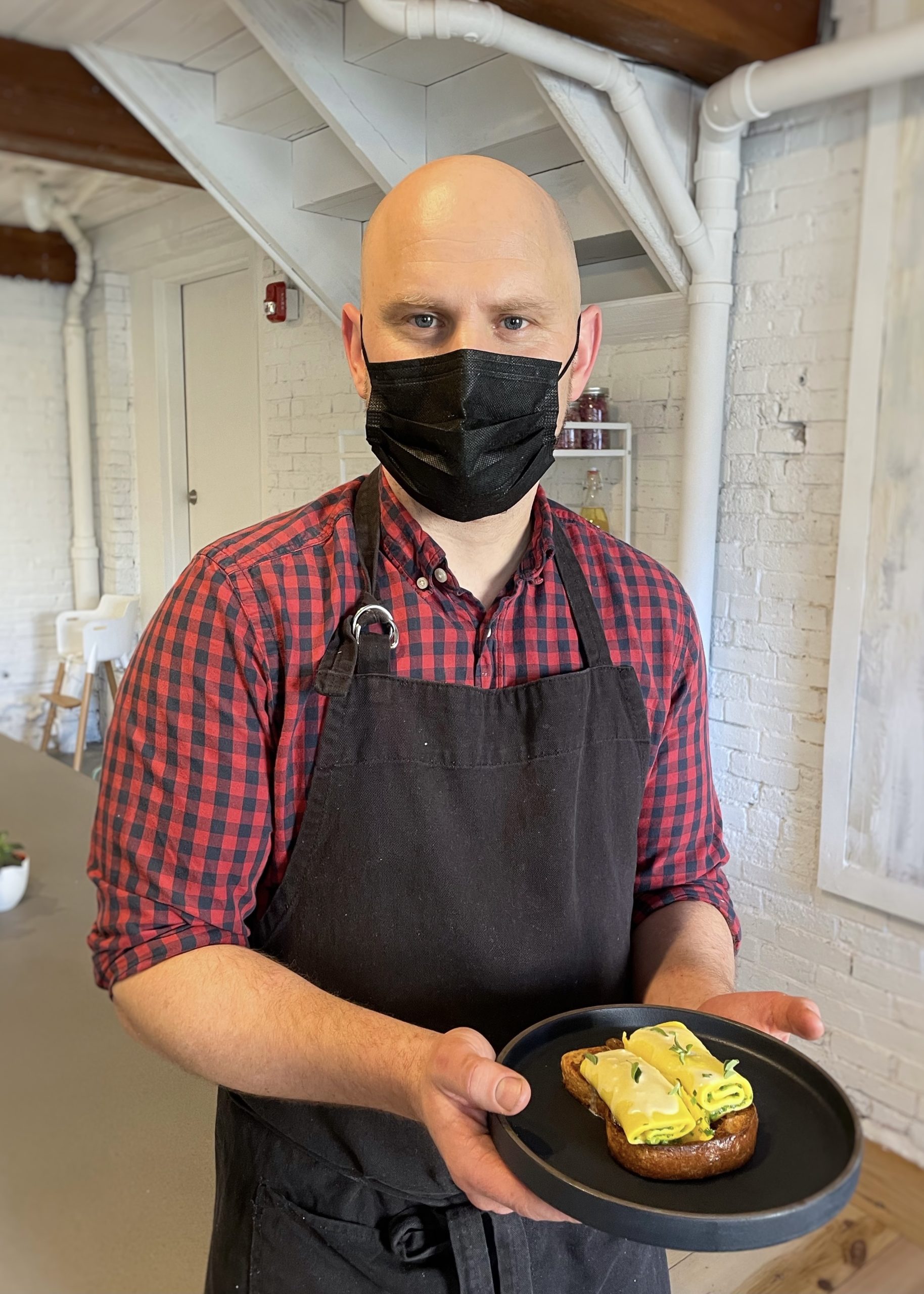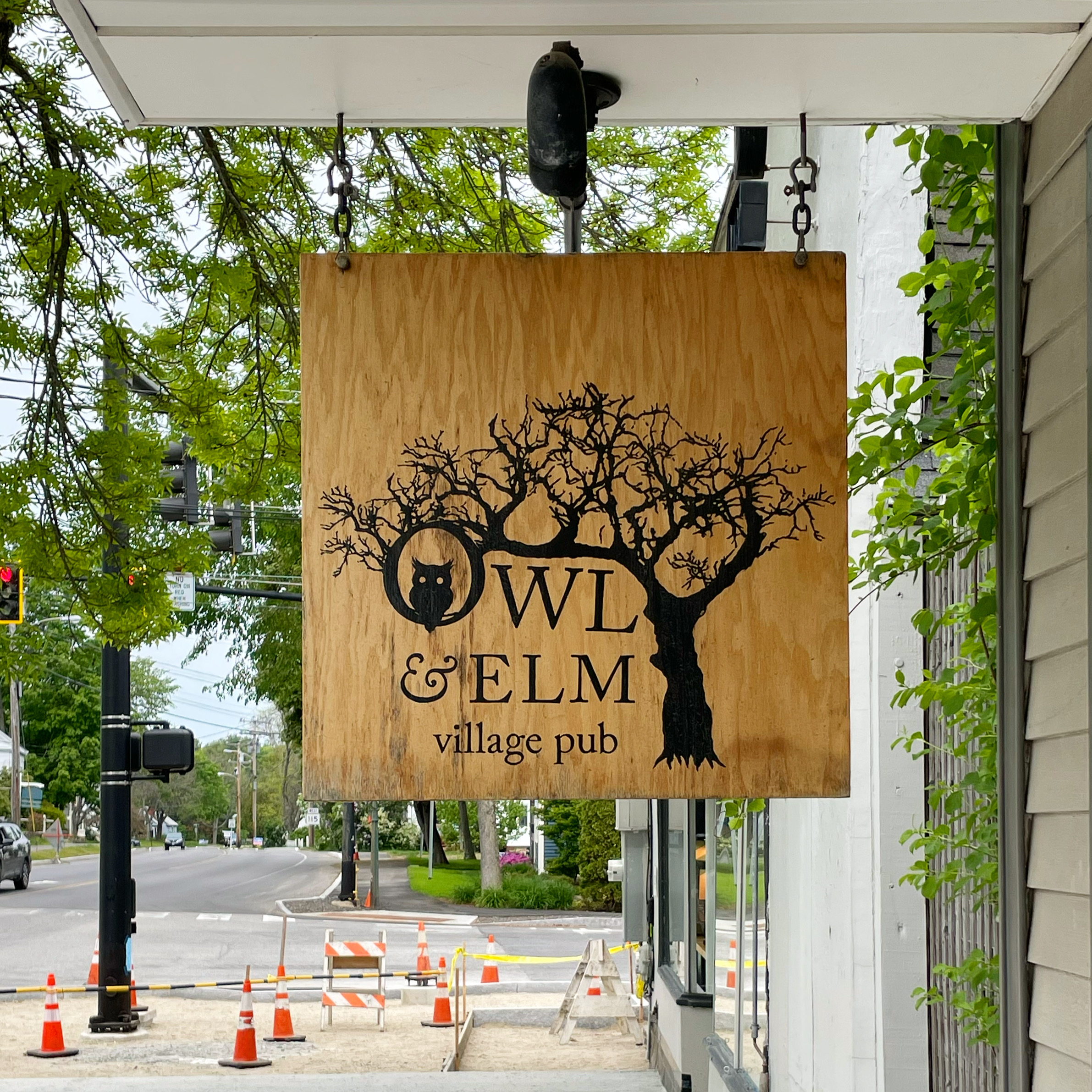Welcome to the June edition of My Kitchen, Their Table, an interview series with the chefs and culinary professionals who work hard to satisfy our small city’s big appetite. This month we’re featuring an interview with Bowman Brown from Elda and Jackrabbit Cafe in Biddeford. Photos and videos will continue to expand on the story throughout the rest of the month on instagram, so stay tuned.
 Bowman Brown credits his strong work ethic and abundant creativity to his upbringing. When he was just twelve years old, he pitched in as a cowhand on his family’s ranch in Arizona. He also tended to his mother’s garden, an experience that helped shape his resourcefulness and innovative use of local and seasonal ingredients.
Bowman Brown credits his strong work ethic and abundant creativity to his upbringing. When he was just twelve years old, he pitched in as a cowhand on his family’s ranch in Arizona. He also tended to his mother’s garden, an experience that helped shape his resourcefulness and innovative use of local and seasonal ingredients.
His great-grandmother, Elda, was especially influential. A woman of many talents, she was a school teacher, a beekeeper and proprietor of a large honey business, a hat maker and door-to-door salesperson, and also lended a hand on the family ranch.
Brown attended Atlantic Culinary Academy in New Hampshire and went on to work at the esteemed Gary Danko in San Francisco and 231 Ellsworth (now closed) in San Mateo. He eventually settled in Salt Lake City where he opened his former restaurant, Forage, in 2009. He was named Best New Chef by Food & Wine in 2011 and was nominated for Best Chef in the Southwest by James Beard Foundation six times. Despite its prestige, Brown closed Forage after nearly seven years. He was ready for a new adventure.
He and his wife, Anna, were searching for a farmhouse in New England when he first visited Biddeford in 2017. Initially, they had no plans of opening a restaurant here, but he recalls walking by and admiring the space, formerly Custom Deluxe. When he returned to Biddeford, it was serendipitously available and Elda, affectionately named after his great-grandmother, was established.
In its first year, Elda was named one of the Best New Restaurants in America by Eater and the New York Times called it “both reverent and innovative.” In March 2020, Elda temporarily closed as they prepared to move into a larger space located at Pepperell Mill Campus. While you patiently await Elda’s grand reopening (expected Summer 2021), check out Brown’s latest concept — Jackrabbit Cafe.
Brown’s new restaurant is named after the desert-dwelling jackrabbit widely found throughout the western United States and his grandfather, Jack Brown. Rooted in heritage and a nod to Brown’s Danish ancestry, Jackrabbit Cafe serves Scandinavian-inspired breads, pastries and cakes as well as seasonal vegetable dishes, sandwiches, and heartier small plates. “It’s basically what we eat at home on a regular basis, but a little fancier,” Brown describes.
Read the full interview below to discover what is unique about his signature omelet at Jackrabbit Cafe, his go-to dishes in Portland, and how the pandemic has had an unforeseen positive impact on his life.
THE INTERVIEW
AA: Reflecting over a year later — has the COVID-19 pandemic had any positive impacts on you?
BB: I cooked at home a lot more than I had in years; I spent more time with my family than I had in years; I sat on the beach more than I had in years. It does put things in perspective, and hopefully, that perspective helps create more of a balance when returning to the kitchen.
AA: Besides yourself, who is in the kitchen at Jackrabbit Cafe?
BB: The pandemic caused most of our staff to take on work elsewhere, so when opening Jackrabbit, we had to start over with building a team. We have two full-time bakers, Kristina Alving and Juliette Risica, that execute my list of bakes, and we were able to hire back our former Chef de Cuisine, Ben McQuay, who will be managing the daily execution of the food menu in the near future.
AA: What makes the omelet on the cafe menu Japanese style?
BB: Traditionally, the Japanese omelet is a rolled omelet seasoned with dashi, which we do with our omelet, but it isn’t strictly traditional. I serve it with housemade spelt brioche bread, onion jam, and fresh herbs.
AA: Will Elda still offer a four-course fixed price menu?
BB: There will still be a fixed price menu, but it will not follow the traditional tasting menu structure. We will offer the full menu at the bar with a very limited selection of a la carte offerings.
AA: Can you say more about the menu at Elda?
BB: We would like to showcase whatever ingredients are at their best at a given time and keep them on the menu for as long as they are viable and in-season. I’m hugely critical of my own cooking, which is why past menus have always changed so often, but also because products here are really inconsistent in availability, especially seafood. It’s a really difficult kind of restaurant to run. It’s endlessly challenging to get the best stuff at the best time and it can be difficult for the staff to have a constantly changing menu. We don’t make it easy on ourselves.
AA: What is one of your favorite dishes in Portland?
BB: The dishes I love from other restaurants are not anything like what I make. Most of the meals I eat out are fast, simple, and guilty pleasures. One of the first things to come to mind is Duckfat’s doughnuts. It’s probably the best fried dough I’ve ever had. The texture is very soft, but bouncy. It has a little bit of toothsome to it.
AA: What is a fast meal that you love in Portland?
BB: The pastrami sandwich at Rose Foods is one of the most exceptional things I’ve had. It’s a classic, straightforward pastrami sandwich. It’s just rye bread, pastrami, and deli mustard.
AA: What do you love about it?
BB: I have a weakness for rye bread, or just earthy dense breads in general, but also the juiciness of the meat and how it fills up the space in your mouth. The texture and temperature of the pastrami is just right. It’s one of those things that’s really hard to nail in a restaurant because if it’s sitting there all day, presumably warm, it has a tendency to dry out, but if it’s not warm enough, it’s not juicy.
AA: Seeing as you are fairly new to the area, are there any restaurants in Portland that you’re looking forward to going to for the first time?
BB: Scales is on my list. I had Fred Eliot’s pâté en croûte at the gala wine dinner event during Portland Wine Week. It was really special. It’s the kind of thing that chefs try to avoid and probably fell out of fashion for a reason because it’s difficult to execute perfectly. The dough can be sort of stodgy, heavy, and soggy, but Chef Eliot’s is perfectly flakey. His dedication to that craft is really inspiring.
AA: Knowing how much you love change and newness, does New England feel like your forever home?
BB: I have put down some significant roots here, so it looks like I’m sticking around for a while. On the other hand, I have a wayfaring heart and a desire to experience many new places, so I guess we shall see.
This interview has been edited and condensed for clarity.
A few notes on the restaurants mentioned in this article: Jackrabbit Cafe opened on May 7th and Elda is expected to reopen this summer. Duckfat has outdoor seating on Middle Street and takeout, Rose Foods is offering takeout, and Scales has outdoor and indoor seating.
Previous editions of My Kitchen Their Table have featured Courtney Loreg, Chad Conley Atsuko Fujimoto, Matt Ginn, Jordan Rubin, and Cara Stadler, Thomas Takashi Cooke, and Ilma Lopez.
The My Kitchen Their Table series is brought to life through the talent and hard work of food writer Angela Andre, and the generous sponsorship by Evergreen Credit Union and The Boulos Company.


